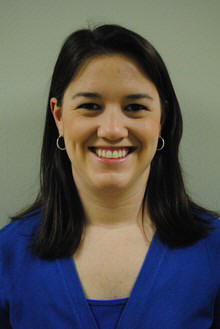|
PRACTICAL
SIGNIFICANCE
A simple
wobble
board
rehabilitation
program
consisting
of
clockwise
and
counterclockwise
rotations
(3 days
a week
for 4
weeks)
improves
clinical
impairments
and
self-reported
functional
stability
in
active
individuals
suffering
from
functional
ankle
instability.
STUDY
BACKGROUND
Rehabilitation
protocols
using
multiple
exercises
have
been
shown to
improve
balance
and
decrease
ankle
sprain
incidence
in
individuals
with
functional
ankle
instability
(FAI).
While
these
outcomes
are
desired,
evidence
is
lacking
on how
each
specific
exercise
in
rehabilitation
programs
contribute
to
improving
clinical
outcomes
and
self-reported
outcomes.
OBJECTIVE
To
quantify
improvements
in
clinical
impairments
and
self-reported
outcome
using a
single
ankle
rehabilitation
exercise
as a
therapeutic
intervention.
DESIGN
AND
SETTING
Prospective,
randomized
controlled
experimental
design.
Research
laboratory.
SUBJECTS
Thirty-four
subjects
with
"giving
way" and
a
history
of ankle
sprains
(i.e.
FAI)
were
participants.
Subjects
had to
score
≤27 on
the
Cumberland
Ankle
Instability
Tool (CAIT).
Seventeen
subjects
(170.22±8.71
cm,
75.57±13.55
kg,
22.94±2.77
yrs;
CAIT=16.94±5.08)
were
randomly
as-signed
to a
rehabilitation
group (REH)
and
seventeen
subjects
(168.57±9.81
cm,
77.19±19.93
kg,
23.18±3.64
yrs;
CAIT=17.18±4.43)
were
randomly
assigned
to a
control
group
(CON).
MEASUREMENTS
Dependent
measures
included
average
number
of foot
lifts
(FLT),
average
reach
distance
(cm)
normalized
by leg
length (PMR),
time (s)
to
complete
testing
(SHT),
and CAIT
score.
Fewer
foot
lifts,
longer
reach
distances
and
shorter
times
indicated
improved
performance.
Larger
CAIT
scores
indicated
improved
self-reported
functional
stability.
RESULTS
Main
effects
for time
were
significant
for all
measures
(P<0.05).
Significant
interactions
were
found
for FLT
(REHpre=5.61±2.59,
REHpost=3.82±2.25,
CON-pre=5.00±1.73,
CONpost=4.61±1.77;
F(1,32)=4.55,
P=0.041),
PMR (REHpre=0.85±0.12,
REHpost=0.98±0.12,
CONpre=0.88±0.08,
CONpost=0.86±0.09;
F(1,32)=23.79,
P<0.001),
and SHT
(REHpre=19.55±9.54
s, RE-Hpost=12.40±6.15
s,
CONpre=16.20±7.95
s,
CONpost=15.18±7.95
s ;
F(1,32)=8.37,
P=0.007).
Post-hoc
testing
showed
that the
REH
group
improved
performance
on all
measures
at
posttest,
whereas
the CON
group
did not.
Main
effect
for time
was
significant
(P=0.021).
A
significant
group by
test
interaction
was
found (REHpre=16.79±4.90,
REHpost=22.86±4.83,
CON-pre=17.00±4.59,
CONpost=16.43±6.03;
F(1,26)=8.88,
P=0.006).
Post-hoc
testing
showed
that
groups
were not
different
at
pretest.
Posttest
score
for the
REH
group
was
greater
than
pretest
score;
the CON
group
did not
improve
at
posttest.
Lastly,
posttest
score
for the
REH
group
was
greater
than the
pre- and
post-
test
scores
for the
CON
group.
CONCLUSIONS
Wobble
board
rehabilitation
improved
clinical
impairments
and
self-reported
functional
stability.
We
suggest
utilizing
this
program
to
improve
balance
and
performance
deficits
associated
with
FAI.
Future
research
should
examine
how long
the
improvements
in
self-reported
functional
stability
last (ie.
1 month,
6
months,
1 year).
|
Publication
&
Presentation
List:
- NATA Oral Presentation (2011)
The Effect of a 4-Week BAPS Rehabilitation Program on Subjects with Functional Ankle Instability, Linens SW*, Ross SE†, Arnold BL†: *Georgia State University, Atlanta, GA, †Virginia Commonwealth University, Richmond, VA.
- NATA Oral Presentation (2012)
The Effect of a 4-Week Wobble Board Rehabilitation Program on Improving Functional Ankle Instability Linens, SW*, Ross SE†, Arnold BL†: *Georgia State University, Atlanta, GA, †Virginia Commonwealth University, Richmond, VA.
Grant Funding Received
2008
Funding
Provided
By
The NATA
Research
and
Education
Foundation
Doctoral
Grant
Program
Grant
Summary
Published
2013
|
|
|
|

Shelly W. Linens, PhD, ATC
Principal Investigator
|
Shelly W. Linens, PhD, ATC
Assistant Professor
Department of Kinesiology & Health
Georgia State University
Atlanta, GA 30303
Phone: (404) 413-8366
Email: slinens@gsu.edu
Dr. Linens currently lives in Atlanta, Georgia. She has been an Assistant Professor and Program Coordinator for the Graduate Sports Medicine Program at Georgia State University since August 2010. She and her husband, fellow athletic trainer, Adam Linens, have two Great Danes.
|
|
|
This
Grant
Information
Summary
may be
downloaded
in a
2-page
pdf file
from
http://www.natafoundation.org/wp-content/uploads/2013/07/Linens_Shelly.pdf
|
Back to
November
22
eBlast
Newsletter
Send e-mail
to rachaelo@nata.org with questions
or
comments
about this web site. |


